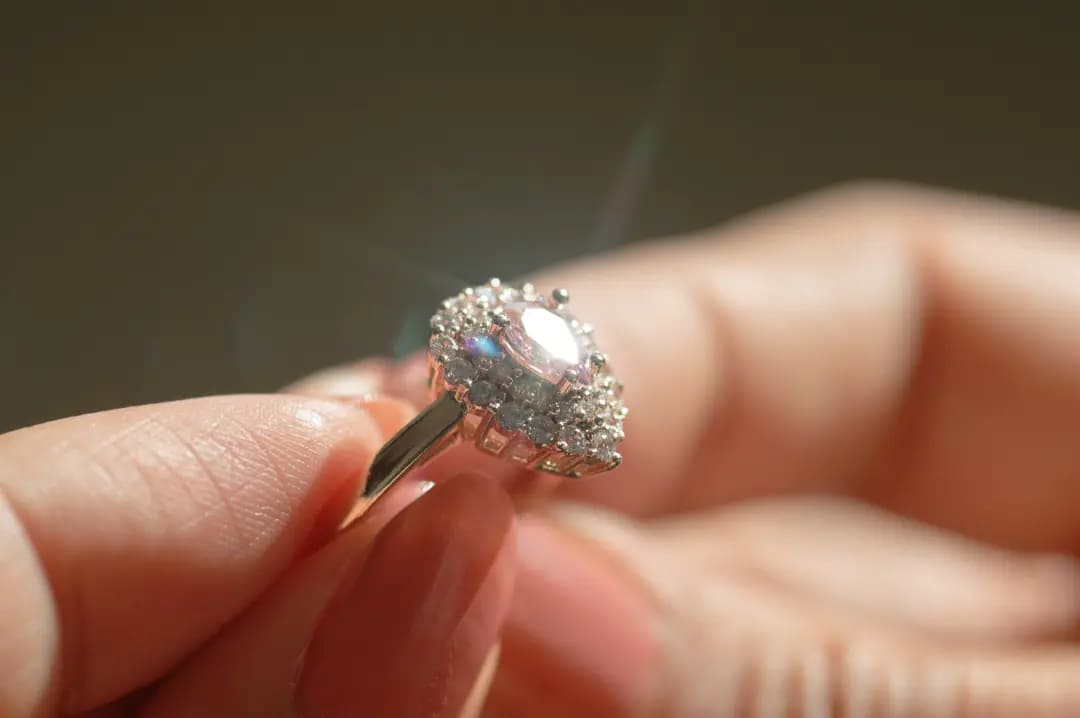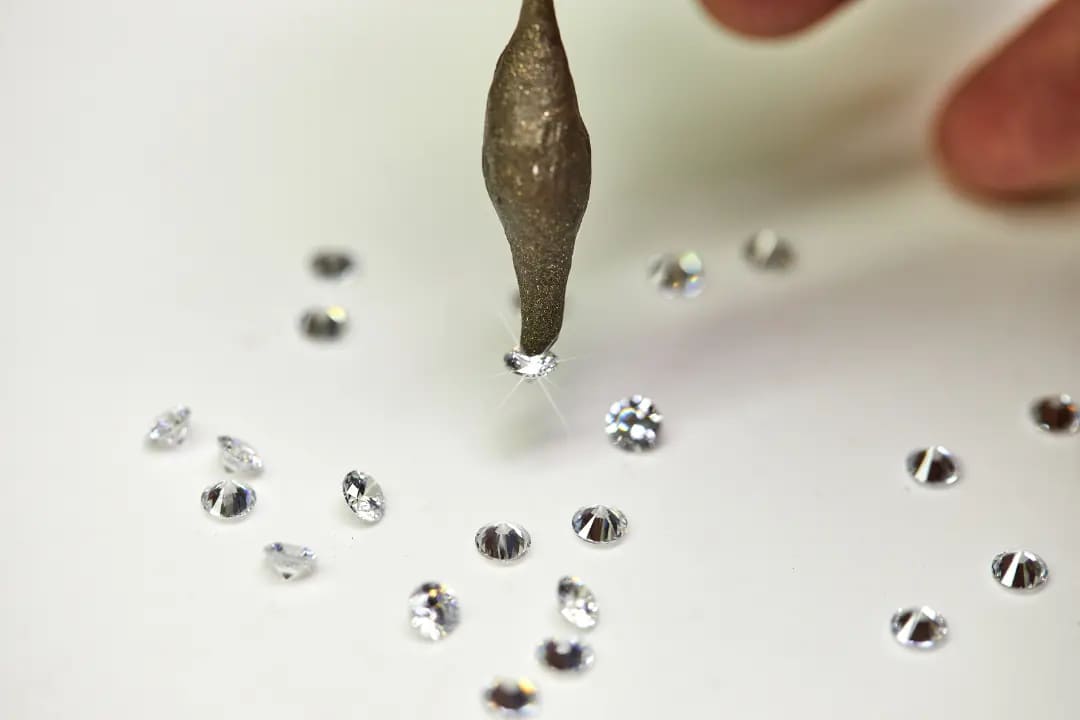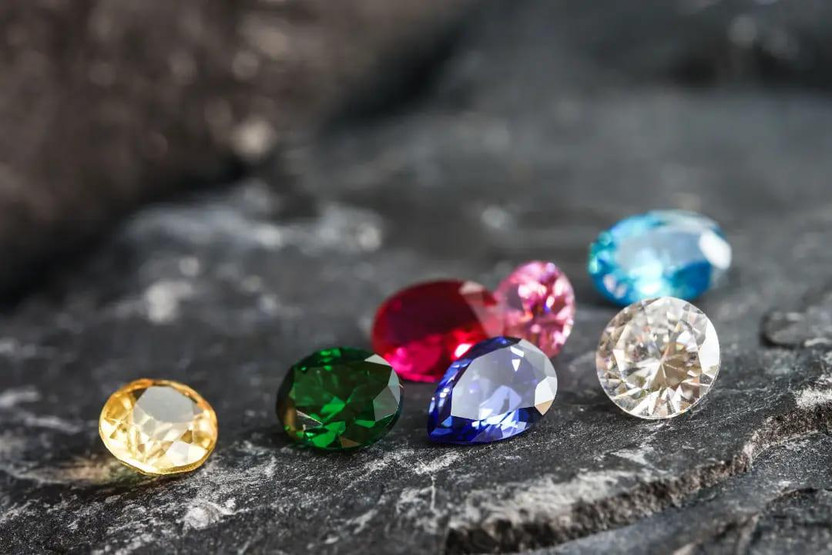Does Moissanite Pass Diamond Tester? A Comprehensive Guide
Posted by Eddie R on Aug 27th 2024
Does moissanite pass the diamond tester?
Yes, it often does.
This is because moissanite shares similar thermal and electrical conductivity properties with diamonds, making it a distinct gemstone with unique characteristics. Discovered in a meteor crater by scientist Henry Moissan, moissanite has an intriguing origin that adds to its allure.
In this guide, we will explore why moissanite can sometimes fool diamond testers and what you can do to accurately identify it.
Key Takeaways
- Moissanite can pass standard diamond testers due to its similar thermal and electrical conductivity, complicating its identification as a diamond.
- Advanced testing methods, including dedicated moissanite testers and multi-testers, are essential for accurately distinguishing moissanite from diamonds. Performing multiple tests alongside a visual examination is recommended to ensure accurate results and avoid misidentifications.
- Moissanite offers economic and ethical benefits as a lab-created gemstone. It is more affordable and conflict-free than natural diamonds.
Introduction to Diamond Testing
Diamond testing is a crucial process in the jewelry industry, ensuring the authenticity and quality of diamonds. Diamond testers are indispensable tools used to distinguish natural diamonds from diamond simulants, such as cubic zirconia and moissanite. These testers primarily measure thermal conductivity, a key property that sets diamonds apart due to their exceptional ability to conduct heat.
In addition to thermal conductivity, diamond testing methods often include electrical conductivity testing. This helps identify moissanite and other diamond simulants, as moissanite shares similar thermal properties with diamonds but differs in electrical conductivity. Understanding these testing methods is essential for both consumers and jewelers to ensure the authenticity and value of diamond jewelry, including engagement rings and wedding bands.
By using diamond testers, jewelers can accurately identify natural diamonds, providing peace of mind to buyers. This process is vital in maintaining the integrity of the jewelry industry and ensuring that consumers receive genuine, high-quality diamonds.
What is a Diamond Tester?
Various methods are used to test diamonds, including thermal conductivity measurement, electrical conductivity testers, and spectrometers, ensuring accurate identification. Diamond testers are tools designed to differentiate real diamonds from simulants and other gemstones. They measure thermal and electrical conductivity to determine if a stone is a diamond.
A heated probe assesses how well a gemstone conducts heat using a specific temperature threshold for accurate identification. The functionality and reliability of diamond tests are crucial, especially in distinguishing between diamonds and moissanite, which can sometimes pass basic thermal tests due to similar properties.
Diamonds’ high thermal conductivity allows them to conduct heat better than most other gemstones, providing a reliable metric for distinguishing them from simulants. Additionally, some diamond testers measure electrical conductivity, offering a more comprehensive assessment.
Today’s most diamond testers range from basic thermal conductivity pen testers to advanced diamond testers. Basic models focus on thermal properties, while advanced testers also measure electrical conductivity, enhancing their ability to accurately identify diamonds and distinguish them from simulants.

Visual Characteristics of Moissanite vs. Diamonds
Moissanite and diamonds have distinctive visual characteristics that aid in identification. Moissanite displays more vibrant flashes of color and has a higher refractive index, ranging from 2.648 to 2.691, enhancing its brilliance.
Moissanite’s double refraction creates a visual effect where light is split into two rays, doubling facet edges. This can be observed under magnification, aiding in distinguishing moissanite from diamonds. Moissanite also has more fire and a different sparkle, especially under LED lights.
Moissanite’s hardness rating of 9.25 to 9.5, though slightly lower than diamonds, ensures it is suitable for everyday wear. Although slightly softer than diamonds, moissanite’s hardness makes it suitable for engagement rings and other jewelry.
These visual and physical differences provide valuable insights when differentiating between moissanite and diamonds.
Moissanite vs Lab Grown Diamonds
Moissanite and lab-grown diamonds are both popular diamond substitutes, each with distinct differences in composition, properties, and price. Lab-grown diamonds are created through advanced technology that replicates the natural diamond-growing process, resulting in a gemstone with identical physical and chemical properties to mined diamonds. This makes lab-grown diamonds virtually indistinguishable from natural diamonds in terms of appearance and durability.
On the other hand, moissanite is a silicon carbide gemstone with a higher refractive index and more fire than diamonds. This gives moissanite a unique sparkle and brilliance, but it can be distinguished from diamonds through thermal conductivity testing. While both moissanite and lab-grown diamonds offer more affordable and sustainable options for engagement rings and other jewelry pieces, they each have unique characteristics that appeal to different preferences.
Can Cubic Zirconia Pass a Diamond Tester?
Cubic zirconia cannot effectively conduct heat, making it identifiable through thermal conductivity tests. Its lower thermal conductivity prevents it from passing as a diamond, allowing diamond testers to easily differentiate between cubic zirconia and diamonds.
Diamond testers rely on both thermal and electrical conductivity measurements to identify gemstones. Since cubic zirconia does not meet the thermal conductivity specifications, it fails to pass a diamond tester, making it a less convincing simulant than moissanite.

Professional Gemological Testing
Trained gemologists play a crucial role in accurately identifying both diamonds and moissanite. While diamond testers are helpful, the nuanced examination by a trained gemologist is essential for reliable results, particularly when distinguishing between natural and synthetic stones. It is also important to seek professional analysis at a gemological laboratory for accurate testing.
Advanced devices like spectroscopes ensure precise moissanite identification, surpassing basic diamond testers’ capabilities. Specialists use a combination of testing methods, including thermal and electrical conductivity measurements, for definitive identification.
Relying on basic diamond testers can lead to misidentification due to user error and operational issues. Professional gemologists, equipped with advanced tools and extensive knowledge, differentiate moissanite from diamonds using visual inspections and properties like refractive index, ensuring accurate identification and peace of mind for buyers.
Professional gemologists employ visual inspections and microscopic analysis techniques to identify subtle differences between gemstones. This comprehensive approach enhances accuracy and reliability, making gemological testing an invaluable resource for discerning buyers.
DIY Tests for Identifying Moissanite at Home
For a hands-on approach, simple DIY tests can help identify moissanite at home. One method is the fog test: breathe on the stone and observe how quickly the fog clears. Quick dissipation indicates a real diamond, while moissanite takes a bit longer to clear.
The fog test is a straightforward method for determining whether a stone is moissanite or diamond. While not as precise as professional testing, it offers a quick and easy way to differentiate between these gemstones.
Combining DIY tests with professional evaluations is recommended for more accurate results.

The Economic and Ethical Benefits of Moissanite
Moissanite offers significant economic and ethical benefits compared to natural diamonds. It is significantly cheaper than natural diamonds of the same size, making it popular among budget-conscious consumers. This affordability allows you to enjoy the brilliance and durability of a gemstone without breaking the bank.
Moissanite stone is produced in laboratories, leading to lower costs and fewer environmental issues, such as deforestation or habitat destruction. The process that makes moissanite results in an eco-friendly and ethical gemstone, as it is conflict-free and has minimal ecological impact compared to diamond mining. Moissanite is a sustainable and responsible choice for those concerned about environmental and ethical implications.
Moissanite is a budget-friendly option with ethical advantages over natural diamonds. Its affordability, sustainability, and ethical sourcing make it attractive to consumers seeking a high-quality gemstone.
Choosing the Right Gemstone for You
When choosing between diamonds and moissanite, consider personal preferences regarding style and values. Moissanite's hardness, rated at 9.25 on the Mohs scale, makes it durable for everyday use. Combined with its ethical and economic benefits, moissanite is a compelling choice for many buyers.
However, buying from trusted stores is crucial when purchasing moissanite jewelry online.
Where to Buy Quality Moissanite Jewelry
When shopping for quality moissanite jewelry, consider purchasing from reputable jewelers known for their quality and reliability. Harlem Bling is a premier retailer specializing in hip-hop and iced-out jewelry, offering a wide selection of moissanite items at competitive prices.
Our extensive collection includes over 3,000 items, such as moissanite rings, pendants, chains, bracelets, earrings, and moissanite watches. You can also create a custom piece with moissanite to match your unique style and preferences.
At Harlem Bling, we offer personalized custom jewelry at affordable rates with excellent customer service. Our fast shipping options and financing plans demonstrate our commitment to customer satisfaction.
With thousands of happy customers and numerous positive reviews, Harlem Bling stands out as a trusted source for quality moissanite jewelry. Whether looking for an engagement ring or a stylish pendant, Harlem Bling offers a wide range of options to suit your needs. Visit our store today!
Where can I buy quality moissanite jewelry?
You can buy quality moissanite jewelry at Harlem Bling, which is known for its reputable selection.
Summary
Distinguishing between diamonds and moissanite can be challenging due to their similar properties. Understanding a gemstone's unique characteristics is crucial, as diamond testers, while useful, have limitations that can lead to misidentification. Advanced and professional gemological testing methods provide more accurate results, ensuring you know exactly what you’re purchasing.
Moissanite offers significant economic and ethical benefits, making it an attractive alternative to natural diamonds. By considering your personal preferences and values, you can choose the right gemstone for you. Whether you opt for a diamond or moissanite, ensure you purchase from a reputable store like Harlem Bling to guarantee quality and satisfaction. Make an informed choice and enjoy the brilliance and beauty of your chosen gemstone.
Frequently Asked Questions
Does moissanite pass a diamond tester?
Moissanite can occasionally pass a diamond tester because it has similar thermal conductivity to diamonds. However, it’s important to note that more advanced testers can distinguish between moissanite and an authentic diamond. Authentic diamonds possess unique properties, particularly in thermal and electrical conductivity, which advanced testers can detect to differentiate them from moissanite.
How can I tell the difference between moissanite and diamond?
To accurately distinguish between moissanite and diamond, utilize advanced testing methods like multi-testers that assess thermal and electrical conductivity. Additionally, diamonds are singly refractive, meaning they allow light to pass through unbroken, unlike moissanite, which exhibits double refraction. This optical distinction contributes to differences in brilliance and sparkle between the two stones, making it another effective way to differentiate them.
Can cubic zirconia pass a diamond tester?
Cubic zirconia cannot pass a diamond tester, as it has lower thermal conductivity compared to diamonds. This makes it easily distinguishable from genuine diamonds.
What are the benefits of choosing moissanite over diamonds?
Choosing moissanite over diamonds offers significant benefits such as affordability, ethical sourcing, and a lower environmental impact. These qualities make Moissanite an appealing alternative for those who value both beauty and sustainability.
Is moissanite a fake diamond?
No, moissanite is not a fake diamond—it's a unique and perfect gemstone in its own right. While it may resemble a diamond to the naked eye and pass a diamond tester due to similar heat conductivity and electrical properties, moissanite stands as an extremely durable, conflict free gemstone with its own optical brilliance and fewer inclusions than many other gems.
How is moissanite compared to diamonds in terms of sparkle and structure?
When moissanite is compared to diamonds, it actually bends light more intensely, resulting in a brighter sparkle compared to diamonds. It's also electrically conductive and has distinct electrical properties. A local jeweler using proper tools can spot these differences, especially since moissanite often has fewer inclusions and behaves differently under light than a diamond or other gems.

